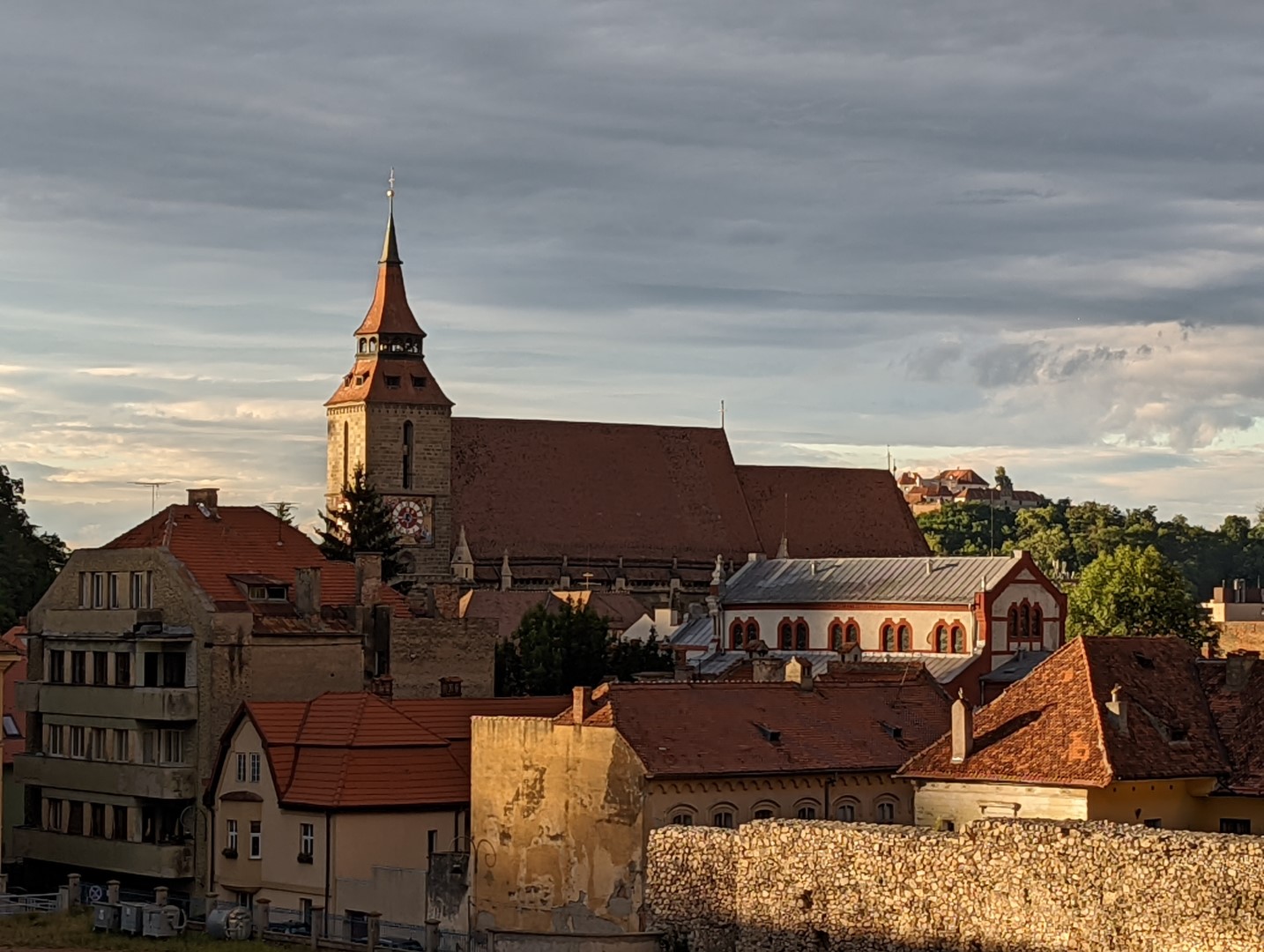We’ve now headed roughly north from Bucharest into the middle of Romania, having spent time the towns of Ploiesti, Sinaia and Brasov, our first city in Transylvania. These are places you have probably never heard of. Nothing really noteworthy in Ploiesti, except for an over-large ugly communist era administrative building plopped in the middle of town. Communist architecture was simply bad.
Peles Castle
Sinaia is the home of Peles Castel the ostentatious summer palace of King Carol I (first king of an independent Romania) , and adjacent Pelesor Castle, the living quarters of the heir to the throne. Peles was designed to impress while Pelesor (while still grand) seemed a bit more livable. The castle was designed with electricity throughout. A turbine in the river provided the electricity to the castle as well as the to the town.
Sinaia
Today, the town of Sinaia is a 4-season resort, with gondolas and trams from the city up to the higher country for summer hiking and winter sports. Lots of trees and birds throughout the city. We discovered papanasi, a delicious Romanian desert. We took the gondola up to the higher country to walk around. It was good to be in mountain nature after our time in Bucharest and Ploiesti. We walked throughout the downtown and the residential streets above, a mix of old and new construction.
Brasov, Transylvania
Brasov has a long and complicated history. The old city was a walled, fortified city from the 1600’s, which was built and occupied by German craftsmen, at the invitation of the ruling Hungarian king. Few Germans remained in Sinaia following WWII. A large Lutheran church near the town center (The Black Church).
The authorities eventually allowed the Romanians to build an Orthodox church on the main square, but with an interesting stipulation: no entrance from the main square into the church. So the entrance to that church is around in back. You can see the steeple of that church in the first photo below, to the right of the Council Building.
I hiked the adjacent Tampa mountain one afternoon for a great view of the city and surrounding countryside.
Bran Castle
We took a day trip to Bran Castle, famous for being associated with Dracula. Dracula is of course a fictional character from Bram Stoker’s novel Dracula, loosely based on Transylvanian folklore and history. Bran Castle is the castle in Transylvania that best fits the description in the novel. As a result, there are lots of tourists , and lots of Dracula kitsch on sale in the adjacent shops. The name Transylvania now conjures up images of werewolves and vampires.
Many factories closed after the end of communism as they were uncompetitive in the larger European market. In a somewhat symbolic move, a large shopping mall in Brasov was built on the site of a former Communist era tractor factory. The population of Romania has been in decline since 1990 as Romanians become economic migrants to other parts of Europe. As a result, there are a lot of abandoned houses and factories scattered around the cities. As one blogger said about Romania “enjoy the beautiful decay”.
Next up, several other Transylvanian cities you have never heard of, so yeah, stay tuned!
















































Leave a Reply